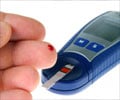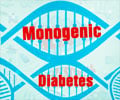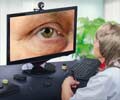Despite major progress in diagnosis and treatment, diabetic retinopathy remains the major cause of blindness in adults under 60 in the U.S.
Despite major progress in diagnosis and treatment, diabetic retinopathy remains the major cause of blindness in adults under 60 in the U.S., said Thomas C. Lee, director, Retina Institute in The Vision Center at Childrens Hospital Los Angeles, associate professor of clinical ophthalmology at the Keck School of Medicine of the University of Southern California and attending physician at Doheny Eye Institute.
Diabetic retinopathy affects 5.3 million adults in the U.S. and some 24,000 of them go blind each year. Nearly sixty percent of all diabetes patients are expected to develop diabetic retinopathy within ten years of their diagnosis.Diabetic retinopathy is the abnormal growth of blood vessels on the surface of the retina and is caused by fluctuations in glucose levels. The retina is the light-sensitive tissue, about the thickness of a postage stamp, at the back of the eye.
If diagnosed early and treated properly, much of the damage can be contained. Unfortunately, many diabetics suffer major vision loss unnecessarily, noted Dr. Lee. “Patients suffering from the early stages of diabetic retinopathy may not notice any changes in their vision. That’s why an annual eye exam for anyone diagnosed with diabetes or at risk of the disease is important.”
With timely laser surgery and proper follow-up care, people with diabetic retinopathy can reduce their risk of blindness by 90 percent. In scatter laser treatment, the surgeon places 1,000-2,000 tiny laser burns in specific areas of the retina. These shrink the abnormal blood vessels and help secure the retina in its proper place.
Almost 21 million people in the U.S. have diabetes and about 6 million of those are undiagnosed. Every year, some 15,000 youth in the U.S. are newly diagnosed with type 1 (juvenile) diabetes and about 3,700 are diagnosed with type 2 diabetes. Almost 90 percent of people diagnosed with Type 1 diabetes will develop some form of diabetic retinopathy.
Dr. Lee noted that while the rate of new cases of diabetes is now decreasing in the white population, it continues to dramatically increase among Hispanics. According to the U.S. Department of Health and Human Services’ National Diabetes Education Program, Mexican-Americans, the largest Hispanic subgroup in the U.S., are twice as likely to have diabetes as non-Hispanic whites. Given current trends, by the year 2050, about 40 percent of Hispanic men and 50 percent of Hispanic women born in the year 2000 will develop diabetes.
Advertisement
SRM















